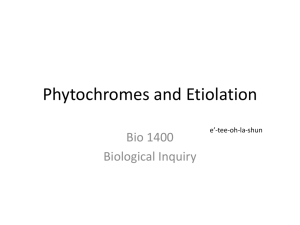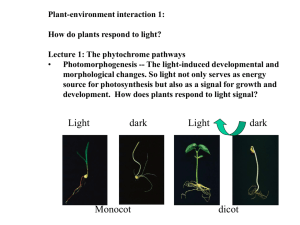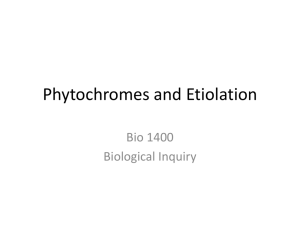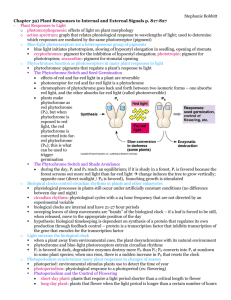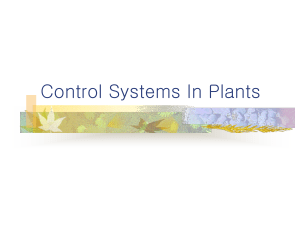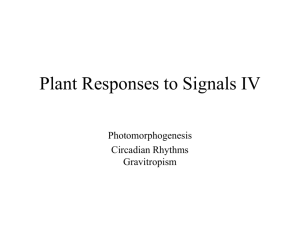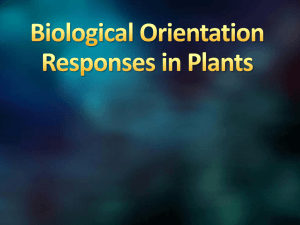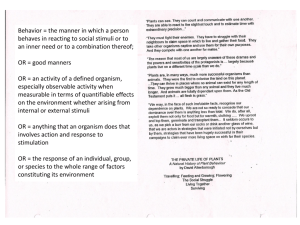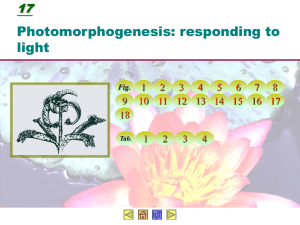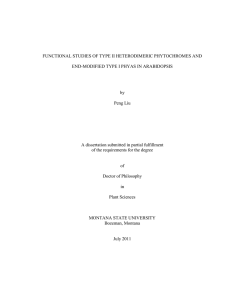What do mosses tell us about how phytochrome works?
advertisement
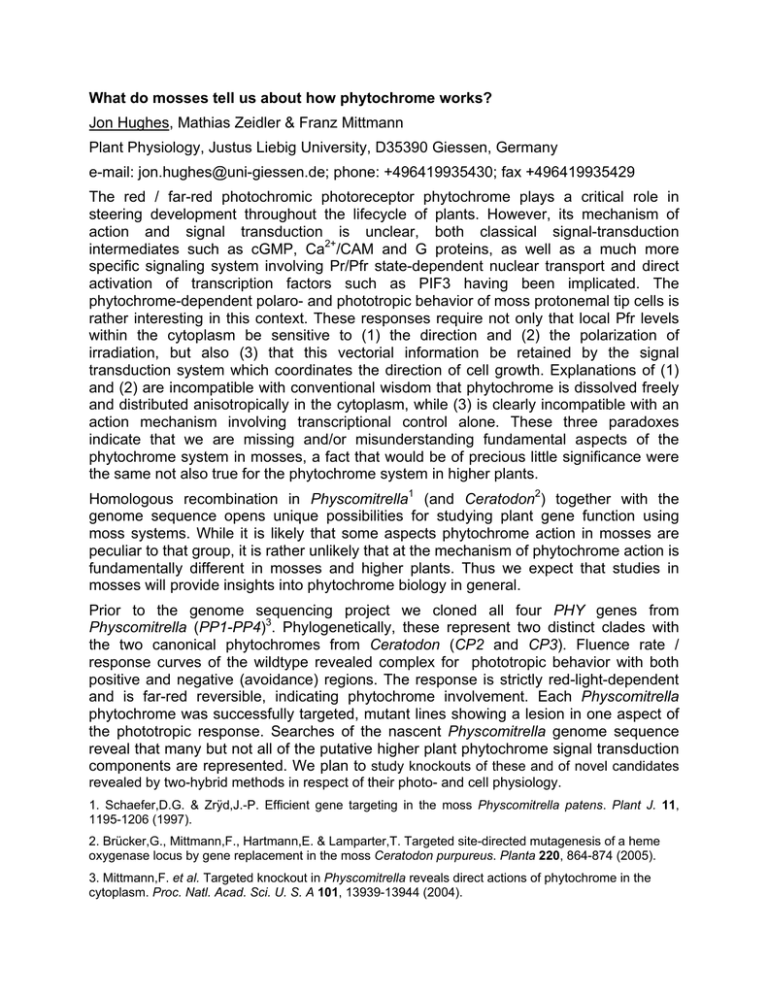
What do mosses tell us about how phytochrome works? Jon Hughes, Mathias Zeidler & Franz Mittmann Plant Physiology, Justus Liebig University, D35390 Giessen, Germany e-mail: jon.hughes@uni-giessen.de; phone: +496419935430; fax +496419935429 The red / far-red photochromic photoreceptor phytochrome plays a critical role in steering development throughout the lifecycle of plants. However, its mechanism of action and signal transduction is unclear, both classical signal-transduction intermediates such as cGMP, Ca2+/CAM and G proteins, as well as a much more specific signaling system involving Pr/Pfr state-dependent nuclear transport and direct activation of transcription factors such as PIF3 having been implicated. The phytochrome-dependent polaro- and phototropic behavior of moss protonemal tip cells is rather interesting in this context. These responses require not only that local Pfr levels within the cytoplasm be sensitive to (1) the direction and (2) the polarization of irradiation, but also (3) that this vectorial information be retained by the signal transduction system which coordinates the direction of cell growth. Explanations of (1) and (2) are incompatible with conventional wisdom that phytochrome is dissolved freely and distributed anisotropically in the cytoplasm, while (3) is clearly incompatible with an action mechanism involving transcriptional control alone. These three paradoxes indicate that we are missing and/or misunderstanding fundamental aspects of the phytochrome system in mosses, a fact that would be of precious little significance were the same not also true for the phytochrome system in higher plants. Homologous recombination in Physcomitrella1 (and Ceratodon2) together with the genome sequence opens unique possibilities for studying plant gene function using moss systems. While it is likely that some aspects phytochrome action in mosses are peculiar to that group, it is rather unlikely that at the mechanism of phytochrome action is fundamentally different in mosses and higher plants. Thus we expect that studies in mosses will provide insights into phytochrome biology in general. Prior to the genome sequencing project we cloned all four PHY genes from Physcomitrella (PP1-PP4)3. Phylogenetically, these represent two distinct clades with the two canonical phytochromes from Ceratodon (CP2 and CP3). Fluence rate / response curves of the wildtype revealed complex for phototropic behavior with both positive and negative (avoidance) regions. The response is strictly red-light-dependent and is far-red reversible, indicating phytochrome involvement. Each Physcomitrella phytochrome was successfully targeted, mutant lines showing a lesion in one aspect of the phototropic response. Searches of the nascent Physcomitrella genome sequence reveal that many but not all of the putative higher plant phytochrome signal transduction components are represented. We plan to study knockouts of these and of novel candidates revealed by two-hybrid methods in respect of their photo- and cell physiology. 1. Schaefer,D.G. & Zrÿd,J.-P. Efficient gene targeting in the moss Physcomitrella patens. Plant J. 11, 1195-1206 (1997). 2. Brücker,G., Mittmann,F., Hartmann,E. & Lamparter,T. Targeted site-directed mutagenesis of a heme oxygenase locus by gene replacement in the moss Ceratodon purpureus. Planta 220, 864-874 (2005). 3. Mittmann,F. et al. Targeted knockout in Physcomitrella reveals direct actions of phytochrome in the cytoplasm. Proc. Natl. Acad. Sci. U. S. A 101, 13939-13944 (2004).
